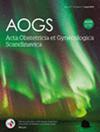Partial agenesis of the corpus callosum: Prenatal ultrasound characteristics, associations, and outcome
Abstract
Introduction
To investigate prenatal ultrasound characteristics, associated abnormalities, and outcomes of partial agenesis of the corpus callosum (pACC).
Material and Methods
A total of 118 fetuses with pACC diagnosed using prenatal ultrasound were studied, and their prenatal ultrasound characteristics, associated abnormalities, genetics, and outcomes were collected. The fetuses were categorized into three groups according to gestational age: <24 weeks, 24–28 weeks, and >28 weeks, and the brain transverse plane ultrasound signs were compared among the three groups.
Results
Prenatal ultrasound revealed the presence of abnormal cavum septi pellucidi (CSP), distention of the interhemispheric fissure (IF), dilated and elevated third ventricle (TV), and ventriculomegaly in 102 (86.4%), 91 (77.1%), 56 (47.4%), and 42 (35.6%) cases, respectively, in the transverse plane of the brain. Among the cases with dilatation and elevation of the TV, 38 (67.8%) showed posterior displacement, manifested by a cystic mass in the midline that communicated with the TV. There were statistically significant differences in the incidence of ventriculomegaly and abnormal CSP among the three groups at <24 weeks, 24–28 weeks, and >28 weeks. However, there were no statistically significant differences in the distention of the IF and TV among the three groups. Moreover, our cohort studies demonstrated that 32.2% (38/118), 18.6% (22/118), and 17.8% (21/118) of the cases were associated with intracranial, extracranial, and intra-extracranial anomalies, respectively. The most common intracranial and extracranial anomalies were cerebral cortical dysplasia and cardiovascular anomalies. Genetic analysis demonstrated that 37.8% (17/41) of patients had genetic abnormalities. 25% (4/16) and 52% (13/25) of isolated and non-isolated pACC cases showed genetic abnormalities. Eight isolated cases were born, with an average age of 28 months, and their neurological development was normal.
Conclusions
Abnormal CSP was the most common indirect sign of pACC. A cystic mass in the midline communicating with the TV can be another indirect sign of a pACC. pACC is likely to be accompanied by intracranial and extracranial abnormalities. The detection rate of genetic abnormalities was higher in non-isolated pACC cases than in isolated cases. Isolated pACC has a good prognosis but requires long-term follow-up of neurological development.


 求助内容:
求助内容: 应助结果提醒方式:
应助结果提醒方式:


